
|
Super-Heroes Other Super-Heroes |
(chronological by time period and film title) Introduction | Flash Gordon | Buck Rogers | Superman | Batman | Spider-Man | X-Men Marvel Cinematic Universe | The DC Extended Universe Iron Man | Hulk | Thor | Captain America | The Avengers | Guardians of the Galaxy Others: A - F | Others: G - N | Others: O - Z |
Other Super Heroes and/or Comic-Book Adaptations/Characters (chronological by time period and film title) |
||||||||||||||||
Ghost Rider - was a Marvel Comics' supernatural superhero (anti-hero). The character, named Johnny Blaze, debuted in Marvel Spotlight # 5 (August 1972), created by writer-editor Roy Thomas, writer Gary Friedrich, and artist Mike Ploog. Then, Johnny Blaze/Ghost Rider received his own Marvel Comics' series in September, 1973. The Ghost Rider volume lasted for ten years and 81 issues. Ghost Rider was actually stunt motorcyclist Johnny Blaze. He had saved his father from cancer by giving up his soul to 'Satan' (a demon named Mephisto). At night, his head would become skeletal and on fire. He also had skeletal hands that could blast others with hellfire.
|
||||||||||||||||
| Super-Hero Films | ||||||||||||||||
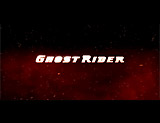
|
Ghost Rider (2007) Columbia Pictures and writer/director Mark Steven Johnson teamed up to produce this film. It was about a stuntman motorcycler-turned supernatural superhero (anti-hero vigilante) and bounty-hunter named Johnny Blaze (Nicolas Cage), aka Ghost Rider. The teen version of Johnny Blaze was portrayed by Matt Long. The main evil characters were Mephistopheles (Peter Fonda) and his demonic son Blackheart (Wes Bentley). |

|
||||||||||||||
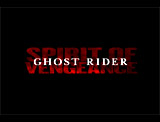
|
Ghost Rider: Spirit of Vengeance (2012) The stand-alone sequel, with Nicolas Cage reprising his title role, was set several years after the first film, and was more severely criticized than the original film. Ghost Rider/Johnny Blaze was hiding out in remote Eastern Europe to attempt to repress his curse. The demon Roarke (Mephistopheles) was portrayed by Ciarán Hinds. |

|
||||||||||||||
Green Arrow - was a DC Comics superhero created by Morton Weisinger and drawn by George Papp. The vigilante character first appeared in More Fun Comics # 73 (November 1941), in the story titled "Case of the Namesake Murders," with a sidekick named Speedy. His alter-ego was billionaire playboy and businessman Oliver Jonas "Ollie" Queen, owner of Queen Industries in Star City. In his super-hero garb, he was costumed like Robin Hood, with a green outfit and an archer's bow, and functioned like Batman (with a bow!). He was a member of the Justice League. The Green Arrow made other appearances in comic books, and in various DC Comics' animated TV properties. To increase his popularity, he was paired with another superhero, the Green Lantern. In 1970, the title of the Green Lantern's comic (volume 2) was officially changed to Green Lantern & Green Arrow # 76 (April 1970). The combining of the two 'green' superheroes (until late 1979) enhanced both of their careers, with more self-consciously relevant scripts that brought up issues of racism, and other problems including pollution, drugs, corruption, and other current events. Parallels were drawn between the two -- the Green Arrow spoke for radical social change while the Green Lantern was an establishment, law and order conservative figure who accepted the system.
|
||||||||||||||||
| Super-Hero Films | ||||||||||||||||

|
Arrow (2012-present) - TV series This live-action TV series was based on the DC Comics character Green Arrow, a costumed crime-fighter created by Mort Weisinger and George Papp. The title character Oliver Queen was portrayed by Stephen Amell. The pilot TV show debuted on The CW TV network on October 10, 2012, and the series soon became the CW's highest-rated new series in five years. It has already run for three seasons and was renewed for a 4th season.
|

|
||||||||||||||
Green Hornet - unlike most superheroes, first appeared on the 1936 radio drama-serial show by the writer-producer team of Fran Striker and George W. Trendle. The first radio airing was on January 31, 1936 on WXYZ in Detroit, with 17-30 minute episodes. The masked crime-fighting super hero and billionaire vigilante was introduced on the radio show that lasted for many years until December, 1952. The radio series told about the adventures of the Green Hornet/Britt Reid and his martial arts Japanese sidekick and manservant Kato. The Green Hornet could be called the first "generational" superhero - he was the grand-nephew of his creators' earlier western hero of legend, the Lone Ranger (aka John Reid). Therefore, the Green Hornet became, essentially, the urban version of the western cowboy hero. The Green Hornet followed in his newspaper editor/publisher father's footsteps, as serious publisher of the newspaper The Daily Sentinel. As a masked vigilante fighting mobster crime (a small eyemask and hat), he drove a modified limousine known as Black Beauty. There were many different versions of the Green Hornet's past in the various media that portrayed him. There have been numerous comics publishers for the superhero beginning in 1940 (Holyoke and Harvey: 1940s, Dell: 1950s, Gold Key: 1960s, etc.). The exploits of the serious and determined Green Hornet were first presented in comic book form (with scripts from Fran Striker), beginning with Holyoke's The Green Hornet # 1 (December 1940 to August 1941). It ran for only six issues before being transferred to another publisher, Harvey (responsible for issues # 7 in June 1942 through # 33 in March 1947), until the title was changed to Green Hornet Fights Crime # 34 (June 1947). The title was again changed to Green Hornet, Racket Buster with issue # 44 (March 1949).
|
||||||||||||||||
| Super-Hero Films | ||||||||||||||||
  

|
The Green Hornet (1940) - Theatrical Serial Universal's 13-episode weekly serial, beginning on January 9, 1940 (with a total running time of 258 minutes) was adapted from the 1936 radio show. It starred Gordon Jones as the young crusading hero Britt Reid (the Green Hornet) - a modern-day 'Robin Hood' and the newspaper publisher of the Daily Sentinel. He and his faithful valet and crime-fighting sidekick Kato (Keye Luke) battled various criminals and racketeers, including insurance scammers and an auto-theft gang. The characters were created by Fran Striker and George Trendle, the same team who created The Lone Ranger and his faithful ethnic sidekick Tonto. The 13 episodes (each about 20 minutes in length) weren't always continuous - some were stand-alone stories.
|

|
||||||||||||||
|
The Green Hornet Strikes Again! (1941) - Theatrical Serial This was Universal's 15-episode sequel (with a total running time of 293 minutes) to its 1940 Green Hornet serial, first airing on January 4, 1941. It starred Warren Hull as the Green Hornet/Britt Reid, replacing Gordon Jones, while Kato (now Korean) was still played by Keye Luke. His main opponent was ruthless crime lord and racketeer Boss Crogan (Pierre Watkins), who was selling bombs to foreign agents.
|

|
||||||||||||||
 TV series  TV series: Episode 1  The Green Hornet (1974)  Fury of the Dragon (1976) |
The Green Hornet (1966-1967) - TV series One result of the successful Batman TV series in 1966 was this Green Hornet TV series spin-off. (And like Batman, the Green Hornet had been featured in two 1940s serials (from Universal Pictures).) This was a mid-60s ABC-TV series that only aired for one season, with 26 30-minute episodes from September 9, 1966 to March 17, 1967 (Friday nights). It starred Van Williams as the Green Hornet and Bruce Lee as his martial-arts sidekick, Kato. They drove a customized 1965 Chrysler Imperial known as Black Beauty, with green lights, front and rear rocket launchers, and a gas gun. The Green Hornet was a serious crime-fighter with two guns: one that could fire green knock-out gas, another that 'stung' with electric shocks. His many criminal opponents included bootleggers, gunrunners, counterfeiters, racketeers, corrupt police and politicians, art thieves, arsonists, and saboteurs.
In the mid-1970s after Bruce Lee's death in 1974, two feature films were made from compiled sequences taken from the TV series:
|
 The Green Hornet (1974)  Fury of the Dragon (1976) |
||||||||||||||

|
The Green Hornet (2006, Fr.) (aka Le Frelon Vert) A 10-minute, short film, made in France, with Manu Lanzi in the title role. |

|
||||||||||||||

|
Legend of the Fist: The Return of Chen Zhen (2010, HK) A Hong Kong martial arts film, based upon the Green Hornet, who was portrayed by protagonist Chen Zhen (Donnie Yen). Chen Zhen was the role made famous by Bruce Lee in Fist of Fury (1972). The film was a sequel to Fist of Legend (1994), a remake of Fist of Fury (1972) which starred Jet Li as Chen Zhen. |

|
||||||||||||||

|
The Green Hornet (2011) Director Michel Gondry's and Columbia Pictures' superhero film starred Seth Rogen as the playboy Green Hornet/Britt Reid and Jay Chou as his sidekick Kato. This was an unsuccessful spoof/comedy feature film effort. |

|
||||||||||||||
Green Lantern - was a DC Comics character in an ongoing series, although with two different characters - with some different origins, names, and powers. The Green Lantern debuted as Alan Scott, created by writer/artist Martin Nodell and writer Bill Finger. He first appeared in All-American Comics # 16 (July 1940), published by National Periodical Publications (later DC Comics), and was later spun off to star in his own self-titled comic book, Green Lantern # 1 (September 1941), which lasted until Green Lantern # 38 (May 1949) (a total of 38 issues from 1941 to 1949), although in this final issue (a sign that the Golden Age of Comics was coming to an end), the Green Lantern wasn't even pictured on the cover. Alan Scott - the first iteration of crime-fighting Green Lantern (a champion of justice) - was a superhero intent on law and order. He possessed a ring that allowed him to tap into the great power of a magical entity known as Starheart. He had carved the power ring out of a glowing green rock, that required charging periodically from a green lantern to remain powerful. He was a very popular superhero through the 1940s.
The next more familiar incarnation of the Green Lantern superhero in the Silver Age was Hal Jordan, created in 1959 by writer John Broome and artist Gil Kane, returning in Showcase # 22 (October 1959). He was then headlined in a new, longer-lasting self-titled series, Green Lantern # 1 (August 1960), running continuously until Green Lantern # 89 (May 1972). However, in this series beginning in the spring of 1970, he was being paired with another superhero from the 1940s, the Green Arrow, beginning in Green Lantern/Green Arrow # 76 (April 1970). The combining of the two 'green' superheroes (until late 1979) enhanced both of their careers, with more self-consciously relevant scripts that brought up issues of racism, and other problems including pollution, drugs, corruption, and other current events. Parallels were drawn between the two -- the Green Arrow spoke for radical social change while the Green Lantern was an establishment, law and order conservative figure who accepted the system. The Green Lantern had returned as Hal Jordan - now refashioned or updated as a more sci-fi character. He was an heroic pilot who was given ('gifted') a powerful ring by an extraterrestrial alien (a member of the Green Lantern Corps) that had crash-landed on Earth. Every 24 hours, the ring had to be recharged at a green lantern. The ring gave him the anti-gravity power of flight (even into space), could unleash green energy, and create constructs of any shape or complexity (for example, a giant fist).
Also, in the mid-60s, the Green Lantern made in appearance in Filmation's animated The Superman-Aquaman Hour of Adventure (1967) with other DC superheroes. Soon after his last appearance in his own comic book volume (# 89) in mid-1972, the Green Lantern began appearing with the Flash in a co-featured comic book, The Flash # 217 (August 1972). |
||||||||||||||||
| Super-Hero Films | ||||||||||||||||
 
|
Green Lantern: First
Flight (2009) - animated Green Lantern: First Flight (2009) was a 75-minute, animated DC Comics original feature film (from Warner Bros.), noted as Green Lantern's first starring role in a film. In the origin story, Christopher Meloni was the voice of Hal Jordan. It was a direct-to-video release. It was soon followed by another direct-to-video animated superhero film, titled Green Lantern: Emerald Knights (2011), although the 84 minute film was not considered a direct sequel to the 2009 animated film. It was an anthology film - a series of stories featuring various members of the Green Lantern Corps. It was released in conjunction or preparation for the Green Lantern live action feature film, also in 2011. |
 
|
||||||||||||||

|
Green Lantern (2011) Director Martin Campbell's and Warners' live-action superhero film starred Ryan Reynolds as Hal Jordan, a USAF top-gun test jet pilot with a supernatural, magical alien green power-ring, and a pulsating, shiny skin-tight green power suit. It also starred Blake Lively as Hal's love interest Carol Ferris. The Green Lantern was recruited to be in an intergalactic police force, patrolling Earth to keep the universe safe from a tentacled floating glob called Parallax that took over the spirit of Professor Hector Hammond (Peter Sarsgaard), transforming him into a malevolent, vengeful telekinetic villain. Jordan was selected by the magic ring to become the first earthling member of an army of warriors known as the Green Lantern Corps. |

|
||||||||||||||
Hellboy - first appeared as a fully formed character in San Diego Comic-Con Comics # 2 (August 1993), a 4-page black and white story, subtitled "World's Greatest Paranormal Investigator." It was a free giveaway at the 1993 San Diego Comic Con. (It was later reprinted in color in Hellboy: Seed of Destruction (October 1994)). [Note: Hellboy debuted as a prototype figure on the cover of Dime Press # 4 (May 1993), an Italian fanzine.] Hellboy then continued in a 4-issue monthly mini-series, a Dark Horse Comics trade paperback titled Hellboy: Seed of Destruction (March - June 1994), the first Hellboy comic book mini-series, illustrated by Mike Mignola and scripted by John Byrne. The subsequent feature films (see below) were based on artist/writer Mike Mignola's Dark Horse Comics publication. Hellboy was a monstrous, red-skinned demonic figure with cloven feet, a tail, horn-stumps on his forehead, and a gigantic stone fist, a 'biblical beast of the apocalypse,' that was summoned in 1944 by the Nazis to come from Hell to Earth. Hellboy was discovered and raised by Professor Trevor Bruttenholm, part of the Allied Forces that formed the United States Bureau for Paranormal Research and Defense (BPRD).
|
||||||||||||||||
| Super-Hero Films | ||||||||||||||||

|
Hellboy (2004) Co-writer/director Guillermo del Toro's and Columbia Pictures' film starred Ron Perlman (as the monstrous horned creature from Hades, "Here To Protect"), Selma Blair (as Liz Sherman), and John Hurt (as Professor Trevor "Broom" Bruttenholm). |

|
||||||||||||||
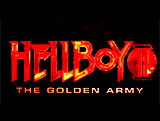
|
Hellboy II: The Golden Army (2008) Director del Toro's sequel brought back Ron Perlman in the title role, with Selma Blair in a supporting role. Hellboy, a demon, worked for a government organization known as the Bureau for Paranormal Research and Defense (BPRD), with his pyrokinetic girlfriend Liz Sherman (Blair), also a BPRD member. |

|
||||||||||||||
Human Torch - was a fictional superhero that appeared in comic books published by Marvel Comics - he was one of the first superheroes of the Marvel Universe. (Note: This 'Human Torch' was unrelated to the Marvel Comics character with the same name that was recycled as a member of the Fantastic Four in 1961. See below) The earliest Human Torch, with the alter-ego name of Jim Hammond, was created by writer-artist Carl Burgos. The Human Torch was a synthetic android created by Professor Phineas T. Horton, a Brooklyn, NY scientist, who at the creature's first unveiling for a press conference burst into flames when exposed to the air. Although regarded as a freak monstrosity, The Human Torch soon became a reknowned superhero and champion of justice. The character first appeared in Marvel Comics # 1 (October 1939) (published by Timely Comics), and was featured in comics for much of the 1940s, beginning in issues of Marvel Mystery Comics # 2 (December 1939). The superhero also acquired his own self-titled issue, premiering in The Human Torch # 2 (Fall 1940). This version of the Human Torch made no significant appearances on TV or on film.
|
||||||||||||||||
Human Torch - was a superhero member of the Fantastic Four, unrelated to the earlier 1939-1940 version of the Human Torch (see above). The Human Torch was created by writer Stan Lee and artist Jack Kirby. He first appeared in The Fantastic Four # 1 (November 1961). His alter-ego was Jonathan "Johnny" Storm, who lived in Glenville, NY, along with his sister Susan. His superpowers were caused by an accidental exposure to cosmic radiation in space during an experimental rocket launch. Johnny, his sister, scientist Reed Richards, and the pilot Ben Grimm were all exposed to the radiation, and decided to form a team known as Fantastic Four. (See Fantastic Four entries for details about Fantastic Four media.)
|
||||||||||||||||
The Incredibles (Mr. Incredible) - Bob Parr (aka Mr. Incredible) (voice of Craig T. Nelson) was the slightly-overweight head of an undercover suburban family of superheroes (or "Supers") in Metroville, known as The Incredibles. The family was living in hiding under the Superhero Protection Program, fifteen years after patriarch Bob put away his cape. Paunchy Bob Parr was unhappily employed as an insurance claims adjuster for Insuricare. The family was forced to put back on their superhero suits to save the world from the film's main super-villain - the amoral Syndrome (voice of Jason Lee), a jilted former fan named Buddy Pine with a giant robotic puppet named Omnidroid. Mr. Incredible was aided by his pliable wife Helen/Elastigirl (voice of Holly Hunter), superfast son "Dash" (voice of Spencer Fox) with superpowers similar to The Flash, and invisible Violet (voice of Sarah Vowell), a sullen and sarcastic teen who could create force fields.
Five years after the film, beginning in March 2009, Boom! Studios (a Disney product) began publishing a comic-book miniseries sequel based on the film. It started with a four-issue miniseries, known as Family Matters, that featured new characters and villains. There were two variations of the cover (see above). |
||||||||||||||||
| Super-Hero Films | ||||||||||||||||
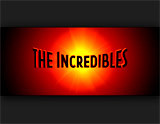
|
The Incredibles (2004) Director/screenwriter Brad Bird's ingenious blockbuster and Oscar-winning Best Animated Feature was the sixth collaboration between Disney and Pixar. At the time, it was one of Pixar's biggest box-office hits, and the first Pixar movie to focus on mostly human characters and the first to receive a PG rating. Paunchy Bob "Mr. Incredible" Parr, an ex-do-good Superhero, was suffering a mid-life crisis and living under-cover in suburbia, with his restless wife Helen - former rubber-limbed masked vigilante Elastigirl, and their superhero children. The family was lured back into super-herodom against the evil Syndrome. |

|
||||||||||||||
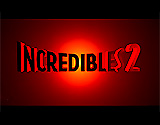
|
The Incredibles 2 (2013) This sequel became the # 1 (domestic) film of the Pixar branded-series. At 1 hour and 58 minutes, it was not only the longest Pixar Animation Studios film to date, but also the longest computer-animated feature film to date. In the story, Bob Parr (Mr. Incredible) was left to care for Jack-Jack, while Helen (Elastigirl) was out saving the world and battling new supervillain Screenslaver.
|

|
||||||||||||||
Justice League of America - was a group of DC Comics' superhero stars, first created by writer Gardner Fox. Their first appearance as a team was in The Brave and the Bold # 28 (March 1960). Their first cover appearance as a team was in Justice League of America # 1 (November 1960). The origin of the team was finally revealed in Justice League of America # 9 (February 1962).
The seven original or founding members were (l to r above): Green Lantern, Martian Manhunter, Superman, Wonder Woman, Batman, Aquaman, and Flash. Other superheroes in the DC universe have also appeared in the League at various times, including Atom, Black Canary, Green Arrow, Hawkgirl, Hawkman, Plastic Man, Stargirl, Shazam, Cyborg, and Zatanna. |
||||||||||||||||
| Super-Hero Films | ||||||||||||||||
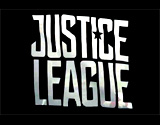
|
Justice League (2017) Justice League, directed by Zack Snyder, was the fifth installment of the DC Extended Universe. It was based on the DC Comics' superhero team, starring Batman (Ben Affleck), Superman (Henry Cavill), Wonder Woman (Gal Gadot), Flash (Ezra Miller), Aquaman (Jason Momoa), and Cyborg (Ray Fisher). The main villain facing the Justice League was Steppenwolf (Ciarán Hinds) and his army of Parademons, while searching for the three Mother Boxes on Earth. The film's production budget of $300 million (estimated) made it one of the most expensive films ever made. The film was released on the same day that Cartoon Network's animated TV series Justice League (2001-2004) first aired 16 years earlier.
|

|
||||||||||||||
 |
Zack Snyder's Justice League (2021) After public pressure, Warner Bros. agreed to release auteur director Zack Snyder's directorial cut of the original 2017 film that was mostly directed by Joss Whedon (writer/director of the first two "Avengers" films). He stepped in to direct when Snyder dropped out due to a family death, and then Whedon rewrote and reshot most of the movie. In the 2017 final theatrical release version, less than approximately 20% was directed by Snyder. This new release with an extra budget of $70 million (and a release on HBO Max), a darker and more violent version, was a whopping 242 minutes long - one of the longest major studio theatrical releases in history (if it were to be released to theatres). The film's story began a few years after the death of Superman (Henry Cavill). The villain was Steppenwolf (voiced by Ciarán Hinds) with an army of Parademons, while the main superheroes included Wonder Woman (Gal Gadot) and Batman (Ben Affleck) who assembled and led a team of other superheroes to defeat Steppenwolf's other-worldly threat, including Justice League members Aquaman (Jason Momoa), Cyborg (Ray Fisher), and The Flash (Ezra Miller). The main quest was to locate three Motherboxes – held by the Kingdoms of Atlantis, the Amazons and humankind, in order to obtain power. |

|
||||||||||||||
Justice Society of America - they were the first superhero team, created by DC Comics. The founding group of eight superheroes included The Atom, Dr. Fate, The Green Lantern, The Hawkman, The Flash, The Sandman, The Hour Man, and The Spectre. Their first appearance together was on the cover of All Star Comics # 3 (winter issue December 1940). They were created by editor Sheldon Mayer and writer Gardner Fox.
After their popularity had diminished
by the early 1950s and they were discontinued (although some
members went solo), the JSA was reconstituted or brought
back as the Justice League of America (see above). |
||||||||||||||||
Kick-Ass - was the creation of Mark Millar (and artist John Romita, Jr.), first published by Icon Imprint (a division of Marvel Comics) in April 2008. The comic book superhero character, HS student Dave Lizewski / also known as Kick-Ass, appeared irregularly (mostly bi-monthly), in 8 issues of the comic-book - the first "book" (or volume) of the series, from 2008 to 2010. Later in 2011, it was published as a 216-page paperback, collecting the first 8 issues together. [Note: Book Two, entitled Hit-Girl - (aka Mindy McCready) began in 2012, and was released monthly.] The comic mini-series Kick-Ass 2 followed (it was actually Book 3 of the series), published from 2010 to 2012, with 7 issues of the comic-book. Another series, Kick-Ass 3 began in 2013 - it was Kick-Ass and Hit-Girl’s blockbuster return for the last ever story arc of the mega-selling series. There were variant covers for many of the issues.
|
||||||||||||||||
| Super-Hero Films | ||||||||||||||||
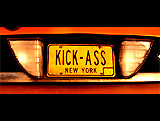
|
Kick-Ass (2010) Director Matthew Vaughn's violent dark action drama/comedy was about a New York teenager Dave Lizewski (Aaron Taylor-Johnson), a comic-book fan, who dreamt of being a super-hero known as Kick-Ass, with a green-yellow costume. It was controversial for its obscenities and a particularly violent profanity-spewing character, a ruthless, purple-costumed vigilante known as Hit-Girl/ Mindy Macready (11 year-old Chloe Grace Moretz). |

|
||||||||||||||

|
Kick-Ass 2 (2013) Director Jeff Wadlow's sequel film starred Aaron Taylor-Johnson as Kick-Ass/David Lizewski, and Chloë Grace Moretz as Hit-Girl/Mindy Macready. The main villain was Red Mist/The Mother F--ker (aka Chris D'Amico), portrayed by Christopher Mintz-Plasse, who was the head of a team of super-villains, dubbed the Toxic Mega C--ts, with their base of operations in New York City. |

|
||||||||||||||
Kiss - the popular hard-rock band Kiss in the late 1970s was involved in a superhero TV film (their debut film) that was inspired after appearances in comic books by Marvel Comics. The group's first major comic-book appearance, in 1977, was in the first Marvel Comics Super Special # 1 - a full-color series of magazine-format comic books. Ultimately, there were 41 issues of the comics series published from 1977 to 1986. The premiere issue, dated simply 1977, featured the rock band Kiss in a 40-page fictional adventure. KISS willingly went along with a promotional gimmick invented to spur sales of the first edition - adding their vials of donated blood to a barrel of red ink used in printing. In the comic book special, they used their superhero powers at night after performing during the day.
Afterwards came a film titled: Kiss Meets the Phantom of the Park (1978) (aka Attack of the Phantoms, or Kiss Phantoms). The cult film (although despised by the rock band) was about the use of Kiss' superpowers to battle an evil, California amusement park engineer-inventor Abner Devereaux (Anthony Zerbe) and save Magic Mountain. |
||||||||||||||||
| Super-Hero Films | ||||||||||||||||
  
|
Kiss Meets the Phantom of the Park (1978) (aka Attack of the Phantoms) - TV movie Kiss (playing themselves) starred in this cartoonish made-for-TV movie (produced by Hanna Barbera) that aired on the NBC-TV network. The four members of the rock band Kiss were at Magic Mountain for a concert. Each of them developed special super powers (with secret talisman amulets), to confront diabolical, crazed inventor Abner Devereaux (Anthony Zerbe) in his underground lab at Magic Mountain, and his squad of animatronic henchmen (an evil robotic version of the band):
|

|
||||||||||||||
Mandrake the Magician - was based on the popular Lee Falk-Phil Davis comic strip, created and first published by syndicated King Features as a daily strip on June 11, 1934. Mandrake fought crime, evil and extraterrestrial and extra-dimensional threats using his powers of hypnotism and illusion, and has generally been considered to be the first comic-strip character to use magic. Also, Mandrake was the first comic to feature an African-American character, Lothar. Mandrake and his companion Lothar formed the first comic book inter-racial crime-fighting act in 1934. Mandrake was also aided by his wife, the lovely and exotic Princess Narda. The first Mandrake daily story, beginning in June of 1934 was "The Cobra" - a story that was 24 weeks in length, from June 11, 1934 to November 24, 1934. It was about Mandrake's dangerous foe - a powerful, evil black magician known as the 'Cobra' who led a secret society of faceless slaves. This was followed by a color Sunday strip on February 3, 1935. The first Mandrake Sunday story was titled: "The Hidden Kingdom of Murderers."
Mandrake the Magician also starred in a 15-minute radio program that aired on the Mutual Broadcasting System from November 11, 1940, until February 6, 1942. Originally a three-day-a-week serial, it expanded to five days a week in 1941. |
||||||||||||||||
| Super-Hero Films | ||||||||||||||||
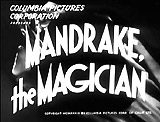
|
Mandrake the Magician (1939) - Theatrical Serial Columbia Pictures' 12-chapter serial (215 minutes in total length) starred Warren Hull as the title character, a top-hatted magician who had remarkable psychic powers of hypnosis and telekinesis, and was assisted by crimefighting companion Lothar (Al Kikume). The main villain in the series was the masked "The Wasp," (identity unknown until revealed to be Dr. Andre Bennett (Edward Earle)) whose goal was to steal a radium-energy machine, created by inventor Professor Houston (Forbes Murray). The serial, shown in weekly installments, first aired on December 7, 1939.
A half-hour pilot film (shot partly at the NBC’s studios in New York and partly on location in Bermuda) was made for an ABC-TV series in 1954, but it was unaired, and it did not result in a TV series. Skilled stage magician Coe Norton starred as Mandrake, and Woody Strode as Lothar. |

|
||||||||||||||
Man-Thing - was a large, slow-moving, semi-intelligent humanoid creature that dwelt in the Florida Everglades. It first appeared, in an 11-page origin story, in Marvel's Savage Tales # 1 (May 1971), created by writers Stan Lee, Roy Thomas, and Gerry Conway, and artist Gray Morrow. It was advertised on the issue's cover as "The Coming of the MAN-THING." Man-Thing attained its own titled comic-book issue, The Man-Thing # 1, in January 1974, heralded as a "Fear-Fraught First Issue." The issue ran for 22 issues (from January 1974 to October 1975)
Man-Thing has often been compared to DC Comics' Swamp Thing, dramatized in Wes Craven's Swamp Thing (1982), The Return of Swamp Thing (1989), the TV series Swamp Thing (1990-1993), and the animated TV series Swamp Thing (1991). |
||||||||||||||||
| Super-Hero Films | ||||||||||||||||

|
Man-Thing (2005) Filmed in 2003, this R-rated made-for-TV film, directed by Brett Leonard, was originally planned as a direct-to-video release, and was finally aired on the Sci-Fi Channel in 2005 and available for the home video market. It was more a horror film than a superhero movie, and turned out to be a tremendous box-office bomb. In the small, swampy bayou town of Bywater, townspeople were disappearing, and the new Sheriff Kyle Williams (Matthew Le Nevez) was trying to discover the source of the mystery, eventually revealed to be a swamp creature (Mark Stevens) (aka Dr. Theodore "Ted" Sallis). |

|
||||||||||||||
Ms. Marvel - a female superhero figure with a long history, first appearing (as Carol Danvers) in Marvel Super-Heroes # 13 (March 1968), with many aliases, including Binary, Warbird, and Captain Marvel (not to be confused with the other male Captain Marvel). She had extensive military training in espionage techniques when she was working as a USAF and NASA officer and was assigned to investigate a Kree alien soldier named Mar-Vell. During battle with the alien, Carol was knocked into a damaged Kree device known as the Psyche-Magnitron - her genetic structure was altered, transforming her into a half-Kree superhuman (described in Captain Marvel # 18 (November 1969)). She could now fly, absorb energy, and exhibit super-strength, and soon was able to harness her powers for good. Carol Danvers debuted as the first incarnation of Ms. Marvel in Ms. Marvel # 1 (January 1977) - "At Last! A Bold New Super-Heroine in the Senses-Stunning Tradition of Spider-Man!" and "Featuring the Most Mysterious Woman Warrior since MADAME MEDUSA! And If You Think Our Leading Lady is Something, Wait'll You See Her Star Studded Supporting Cast!"
|
||||||||||||||||
| Super-Hero Films | ||||||||||||||||
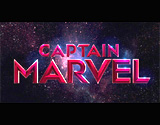
|
Captain Marvel (2019) It was notable as Marvel Studios' first female-led superhero film. Brie Larson starred as warrior and Starforce member Vers on the Kree Empire's capital planet of Hala. She was trained and mentored by Yon-Rogg (Jude Law) for the elite Starforce. After Vers was abducted by the alien enemy the Skrulls, she escaped but crash landed on Earth. In her past, Vers was Air Force pilot Carol Danvers, whose experimental airplane crashed in the Kree Empire. She was renamed Captain Marvel after Earth was caught in the center of a galactic war between two alien civilizations. It was the 21st film in Marvel's Cinematic Universe (MCU). |

|
||||||||||||||
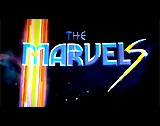
|
The Marvels (2023) It served as a sequel to the film Captain Marvel (2019), with a new team of superheroes known as "The Marvels": Carol Danvers (Brie Larson), Kamala Khan (Iman Vellani), and Monica Rambeau (Teyonah Parris). The story featured villainous Kree leader Dar-Benn (Zawe Ashton) who was attempting to steal natural resources from various alien planets in order to revitalize her dying homeworld of Hala. It was the 33rd film in Marvel's Cinematic Universe (MCU). |

|
||||||||||||||
The Mask - was a wacky, hyperactive superhero based upon a Dark Horse Comics comic-book character. The Mask comic book series was created by writer John Arcudi and artist Doug Mahnke, and based on a concept by publisher Mike Richardson. The Mask first appeared in Dark Horse Presents # 10 (September 1987) as "The Masque," and then as "The Mask" in Mayhem # 1 (May to September 1989) for only four issues. Each issue contained three twelve-page, action-packed stories.
|
||||||||||||||||
| Super-Hero Films | ||||||||||||||||
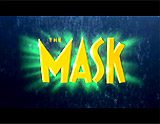
|
The Mask (1994) This comic-book styled, action-fantasy comedy, with the tagline: "From Zero to Hero," starred Jim Carrey as geeky banker Stanley Ipkiss who was transformed into a frenetic and zany Tex Avery-like superhuman by a magical mask. |

|
||||||||||||||

|
The Mask: Animated Series (1995-1997) - TV series This syndicated, animated TV series, a spin-off, ran on CBS for three seasons (with a total of 55 half-hour episodes), from August 12, 1995 to August 30, 1997. Stanley Ipkiss/The Mask was voiced by Rob Paulsen, and the primary mad scientist villain was Pretorius (voiced by Tim Curry). The hit Saturday morning TV series led to its own Dark Horse comic book series, titled Adventures of The Mask, published for only one year with twelve issues (# 1-12), from January 1996 to December 1996. |

|
||||||||||||||
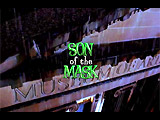
|
Son of the Mask (2005) Released over a decade after The Mask (1994), this comedy was an awful sequel (and flop) with Jamie Kennedy substituting for Carrey. |

|
||||||||||||||
Meteor Man - was a Washington DC school teacher named Jefferson Reed who became a superhero with super-powers, named Meteor Man, after being struck by a glowing green meteorite. He came to the aid of his beleaguered and terrorized inner-city Washington, DC neighborhood by the local gang, the Golden Lords (with leather jackets and dyed blonde hair). Marvel Comics produced a 6-issue limited series spin-off (August 1993 to January 1994), titled Meteor Man, written by Bert B. Hubbard and Dwight D. Coye. On the cover, Meteor Man was dubbed "A HERO for Today's Troubled Times!" There was also a one-issue movie issue (of 64 pages), cover-dated July 1, 1993, "Based on the Robert Townsend/MGM June Movie Release!"
|
||||||||||||||||
| Super-Hero Films | ||||||||||||||||

|
Meteor Man (1993) Writer/director/producer Robert Townsend was the star of this MGM comic-fantasy with an all-star cast (mostly African-American) - it was a box-office bomb. He starred as a mild-mannered substitute teacher who gained many superhero powers after he was hit by a meteor. |

|
||||||||||||||
(Mighty Morphin') Power Rangers - was a major franchise developed from the live-action, children's hit TV series debuting in 1993 that featured teams of costumed heroes. It was created by Haim Saban and Shuki Levy. Some of the source material for the TV series that began the franchise came from Japan, from the 1992 Super Sentai series . A number of Power Rangers comics were subsequently published by Hamilton Comics beginning with Mighty Morphin' Power Rangers # 1 (November 1994). Later, there were two Marvel Comics' series.
As of the year 2017, there were
three theatrical films in the franchise, and the TV show consisted
of 20 TV seasons of 17 different themed series - too numerous
to detail. |
||||||||||||||||
| Super-Hero Films | ||||||||||||||||
|
Mighty Morphin' Power Rangers (1993-1995) - TV series This was a popular, live-action kids TV series that premiered on FOX Kids -TV (weekday afternoons) on August 28, 1993, and ended in late 1995. In this adolescent-targeted, fast-paced adventure series, the team of five, colorfully-costumed, teenaged Power Rangers had to constantly battle to save the world from its evil nemesis, especially Rita Repulsa, an evil intergalactic space witch. The five, recruited at the Angel Grove Recreation Center and Juice Bar, included (in the original line-up):
Later, the Green Ranger was added to the mix of characters, Tommy Oliver (Jason David Frank) - and he later become the White Ranger and leader of the team. There were three, highly-successful seasons of shows (and a total of 145 half-hour episodes):
|

|
||||||||||||||

|
Mighty Morphin' Power Rangers: The Movie (1995) 20th Century Fox's commercially-oriented movie was derived from the popular kids TV series (from 1993-1995) about a group of six teenaged Power Rangers, portrayed by the TV season's regular cast, with super-hero powers. It was heavily-marketed with Power Ranger toys and related merchandise. |

|
||||||||||||||
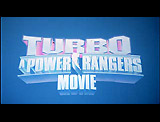
|
Turbo: A Power Rangers Movie (1997) A fantasy-adventure sequel to the 1995 film, a poorly-received film. The legendary Power Rangers were commissioned to stop the evil space pirate and she-devil Divatox (Hilary Shepard Turner). The power-crazed Divatox sought to marry Maligore, a fire monster, in order to terrorize the galaxy. To free Maligore, volcanically imprisoned on the island of Maranthius, Divatox needed to acquire a key held by the kindly wizard Lerigot. |

|
||||||||||||||
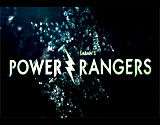
|
Power Rangers (2017) (aka Saban's Power Rangers) This was the third Power Rangers film - a reboot, directed by S. African Dean Israelite. The main characters of the Mighty Morphin' Power Rangers TV series were featured, but portrayed by a new cast. It was noted as being the first major blockbuster with LGBTQ and autistic superheroes. Although it was deemed a box-office failure for the most part, it became the highest-grossing film of the Power Rangers' franchise/trilogy, with domestic revenue of $85.4 million. The film made a record profit from toy sales in the UK to recoup its production budget of $100 million. |

|
||||||||||||||
Morpheus (aka Dream) - a metaphysical or anthropomorphic superhero character of the 'collective unconscious' - aka the Lord of the world of dreams, who was created in the late 1980s. Morpheus made his first appearance in The Sandman # 1 (January 1989), published by DC Comics' Vertigo brand. Morpheus (or Dream) was one of the seven Endless, along with Destiny, Death, Desire, Despair, Delirium (Delight), and Destruction. Morpheus' dwelling place was within a realm known as the Dreaming, from where he controlled the aspects of fantasy and reality in the universe.
|
||||||||||||||||
Mystery Men - was a superhero group introduced in Bob Burden's Flaming Carrot Comics # 16 (June 1987) (published by Renegade Press). [Note: Flaming Carrots was then published by Dark Horse Comics from 1988-2002, and then 2004-2006 by Image Comics.] In 1999 after the feature length film, Dark Horse Comics published four issues of a short-lived spin-off comic-book series, titled Bob Burden's Original Mysterymen Comics # 1 - 4 (July to October 1999). Also, a two-part Dark Horse Comics movie adaptation comic-book of Mystery Men was available in July-August of 1999, to supplement the movie.
|
||||||||||||||||
| Super-Hero Films | ||||||||||||||||

|
Mystery Men (1999) Director Kinka Usher's debut film and offbeat comic spoof from Universal Studios was co-scripted by Bob Burden and Neil Cuthbert. The box-office bomb was about a blue-collar trio of inferior super-heroes with dubious powers in the metropolis of Champion City, including Mr. Furious/Roy (Ben Stiller), the Shoveler/Eddy (William H. Macy), and the Blue Raja/Jeff (Hank Azaria). The main super-villain was Casanova Frankenstein (Geoffrey Rush) with his beautiful sidekick Dr. Anabel Leek (Lena Olin), who kidnapped the city's real local superhero Captain Amazing/Lance Hunt (Greg Kinnear), and then prepared to unleash a deadly, reality-bending doomsday device known as the "Psycho-frakulator." The three lesser superheroes recruited three more individuals to help them: The Spleen (Paul Reubens), Invisible Boy (Kel Mitchell), and The Bowler/Carol (Janeane Garofalo). The combined team of Mystery Men was trained by the mysterious Sphinx (Wes Studi) and mad scientist Dr. Heller (Tom Waits), to combat and defeat Casanova Frankenstein. |

|
||||||||||||||
Nick Fury - was based upon the Marvel Comics' character created by writer/artist Jack Kirby and writer Stan Lee. Nick Fury first appeared in Sgt. Fury and His Howling Commandos # 1 (May 1963), not as a secret agent, but as a cigar-chomping leader of an elite US Army unit during World War II. The long-running series of 167 Sgt. Fury issues ran from May 1963 to December 1981. An updated modern-day Nick Fury - who first transitioned from Sgt. Fury to a CIA agent, made his debut in Fantastic Four # 21 (December 1963). A year and a half later in Strange Tales # 135 (August 1965), Fury became the James Bond-like spy agent and leader of Marvel's super-spy agency, S.H.I.E.L.D. (aka Strategic Hazard Intervention Espionage Logistics Directorate), an international-espionage organization. Fury received his cool spy credentials in Strange Tales # 151 (December 1966). The live-action, 1998 TV movie version of Nick Fury with David Hasselhoff came long before bald-headed African-American Samuel L. Jackson starred as Nick Fury. Jackson first appeared as Nick Fury in Iron Man (2008), one of the films in Marvel's Cinematic Universe.
|
||||||||||||||||
| Super-Hero Films | ||||||||||||||||

|
Nick Fury: Agent of Shield (1998) This was a 90 minute, made-for-TV pilot starring David Hasselhoff, as the title character, Colonel Nick Fury. The Rod Hardy-directed film aired on FOX-TV on May 26, 1998. Shield was spelled as a full-word, instead of S.H.I.E.L.D. as in the original comic book title. The retired Colonel Nicholas 'Nick' Joseph Fury (advertised as "The Last Superhero") fought against a terrorist organization known as HYDRA to stop the release of a viral attack on Manhattan. It was Marvel's last live-action TV show for a number of years, and the end of the era of TV movies for the company. |

|
||||||||||||||